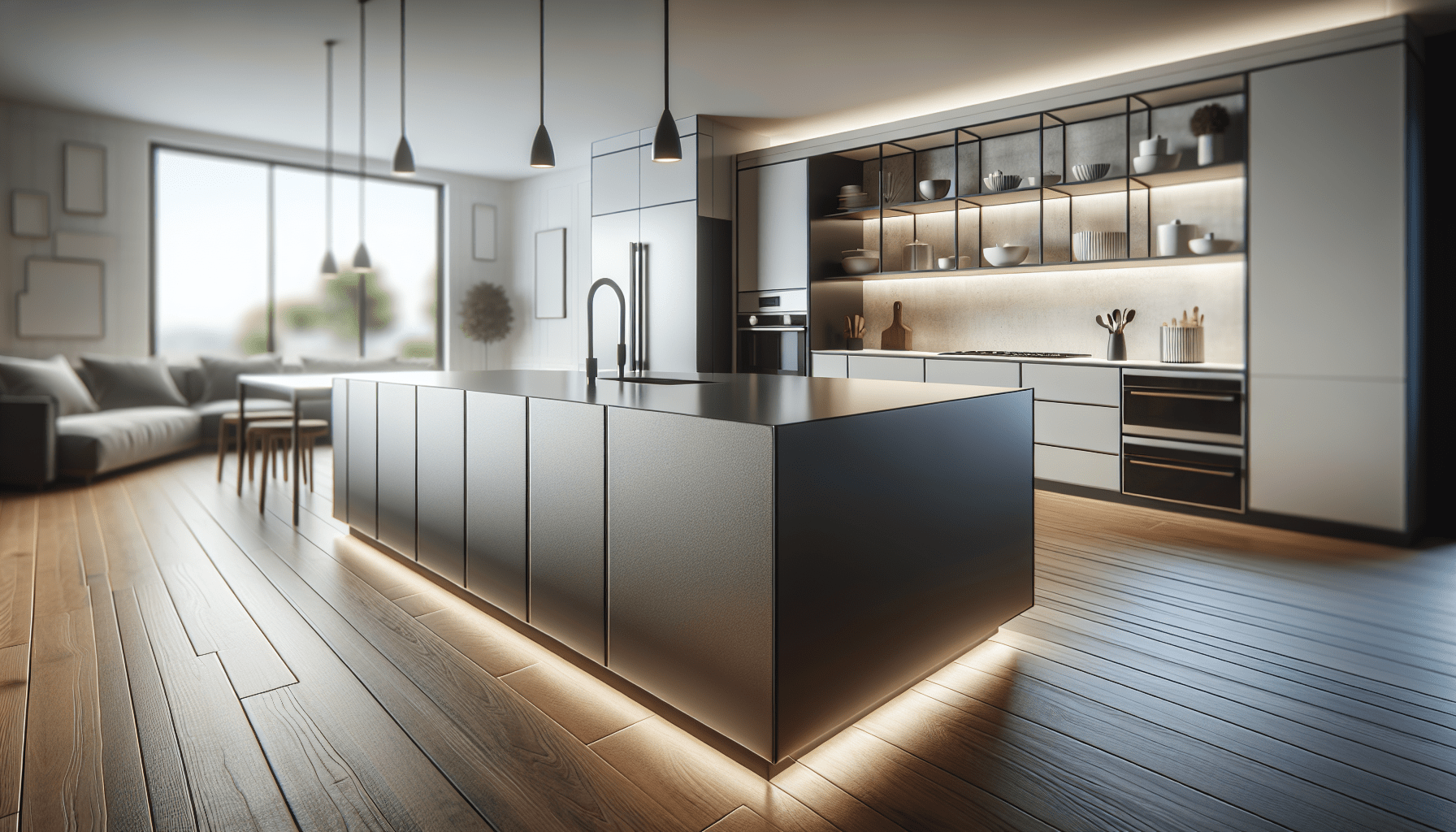Do Countertops Get Installed Before Appliances?
In the process of setting up your dream kitchen, one important question often arises: when it comes to countertops and appliances, which one gets installed first? This article will shed light on this common dilemma, offering valuable insights into the optimal order of installation, ensuring your kitchen renovation project progresses smoothly. So, get ready to discover the logical sequence that will ensure your countertops and appliances come together flawlessly, creating a stunning and functional space that you’ll love to spend time in.
Order of Installation
Determining the Order
When it comes to kitchen remodeling or renovation projects, determining the order of installation is crucial to ensure a smooth and efficient process. Two key components of kitchen installation are countertop installation and appliance installation. While there is no one-size-fits-all answer to whether countertops should be installed before appliances or vice versa, there are several considerations to keep in mind.
Considerations for Installation
One of the primary considerations when deciding the order of installation is the kitchen layout. Carefully evaluate the design and layout of your kitchen to determine which aspects should take priority. Additionally, factors such as the size and shape of appliances, electrical and plumbing connections, and the goal of achieving seamless integration should all be taken into account.
Importance of Proper Sequence
The proper sequence of countertop and appliance installation is essential to ensure a successful and hassle-free project. Installing countertops before appliances allows for a smoother workflow, as it provides a stable work surface for the installers. On the other hand, installing appliances first may be necessary in cases where specific measurements or electrical and plumbing connections need to be accounted for. By understanding these considerations, you can make informed decisions about the order of installation that will work best for your kitchen renovation project.
Countertop Installation
Defining Countertop Installation
Countertop installation involves the process of fitting and securing a surface on top of base cabinets to create a functional workspace in the kitchen. Countertops can be made from a wide range of materials, including granite, marble, quartz, and laminate. The installation process typically involves measuring and cutting the countertop to fit the specific dimensions of the kitchen, applying adhesive, and securing it in place.
Preparing for Countertop Installation
Before countertop installation can begin, proper preparation is essential. This includes clearing out the existing countertops and ensuring the base cabinets are level and structurally sound. Any necessary plumbing or electrical work should also be completed prior to installation. Additionally, if you have chosen a natural stone countertop, it may need to be sealed prior to installation to protect it from stains or damage.
Process of Countertop Installation
the process of countertop installation involves several steps. First, the installer will take accurate measurements of the kitchen layout and the countertops to ensure a precise fit. Then, the chosen material will be cut and shaped according to these measurements. Once the countertops are ready, they will be transported to the kitchen and carefully installed on the base cabinets. Finally, any seams will be filled and finished, and the countertops will be cleaned and inspected for quality.

Appliance Installation
Defining Appliance Installation
Appliance installation refers to the process of setting up and connecting various kitchen appliances, such as refrigerators, ovens, dishwashers, and cooktops, to make them functional and accessible. This step is crucial in transforming a kitchen into a fully operational space where cooking, cleaning, and food storage activities can take place smoothly.
Preparing for Appliance Installation
Before appliance installation can take place, it is important to ensure that the necessary electrical and plumbing connections are in place. If these connections need to be modified or installed, it is advised to consult with professionals to avoid any safety issues or code violations. Additionally, adequate space should be allocated for each appliance, taking into account factors such as ventilation requirements and accessibility for maintenance.
Process of Appliance Installation
The process of appliance installation typically involves unpacking and inspecting the appliances, ensuring that they are in good condition and free from any damages or defects. Next, the appliances will be carefully positioned in their designated locations, making sure that all necessary clearances and spacing requirements are met. Finally, electrical and plumbing connections will be made, and the appliances will be tested to ensure proper functionality.
Factors Influencing Order
Kitchen Layout
The layout of your kitchen is a significant factor to consider when determining the order of installation. If your kitchen has an open layout and the countertops are the centerpiece of the design, it might be more practical to prioritize countertop installation first. However, if your kitchen has a complex layout or if appliances play a more prominent role, it may be more beneficial to install appliances before countertops.
Size and Shape of Appliances
The size and shape of your appliances can also influence the order of installation. If you have large and heavy appliances, such as a professional-grade range or a built-in refrigerator, it might be more efficient to install these appliances first to avoid any potential damage to the countertops during the installation process. Additionally, appliances with unique dimensions or specific installation requirements may require countertop measurements to be adjusted accordingly.
Electrical and Plumbing Connections
Consideration should be given to the electrical and plumbing connections required for both the countertops and appliances. If extensive modifications to electrical or plumbing systems are necessary, it may be more practical to coordinate the installation of these connections before proceeding with either the countertop or appliance installation. This will ensure that all necessary infrastructure is in place and prevent any potential rework or disruptions later on.
Seamless Integration
Achieving a seamless integration between countertops and appliances is often a priority for many homeowners. If you have chosen appliances with specific design features or finishes that need to be matched to the countertops, it is advisable to install the countertops first. This will allow for better coordination and alignment of colors, styles, and overall aesthetic appeal. However, it is important to balance this consideration with practical factors such as functionality and ease of installation.

Countertop Selection
Choosing Countertop Materials
When it comes to countertop selection, there is a wide array of materials available, each with its own unique characteristics and benefits. Popular choices include granite, marble, quartz, and laminate. Consider factors such as durability, maintenance requirements, and aesthetic appeal when selecting your countertop material. It is also essential to keep your budget in mind, as certain materials may have a higher cost than others.
Considering Functional Needs
Another crucial aspect of selecting countertops is considering your functional needs. If you are an avid cook or frequently entertain guests, you may want to prioritize durability and heat resistance. Additionally, factors such as stain resistance, ease of cleaning, and resistance to scratches should also be taken into account. Understanding your specific usage requirements will help you choose a countertop material that best suits your lifestyle.
Coordinating with Kitchen Design
Your choice of countertops should harmonize with your overall kitchen design scheme. Consider the existing or planned color palette, cabinetry finishes, and flooring materials when making your selection. For example, if you have a modern kitchen with sleek, minimalist aesthetics, a quartz or concrete countertop may be the perfect fit. On the other hand, a traditional kitchen with warm wooden cabinetry might benefit from the timeless elegance of a granite or marble countertop.
Scheduling Countertop Fabrication
Keep in mind that the fabrication and delivery time for countertops can vary depending on the chosen material and the availability of the fabrication facility. It is important to factor in this time frame when planning your kitchen renovation project to ensure that the countertops will be ready for installation at the appropriate stage. Coordinating with the countertop fabricator or supplier in advance will help ensure timely delivery and installation.
Appliance Selection
Determining Appliance Sizes
Choosing the right appliance sizes is crucial to achieving a functional and visually pleasing kitchen layout. Measure the available space accurately and consider any specific requirements for the appliances you desire, such as clearance for door swings or ventilation. Additionally, take into account the size of your countertops, as some appliances, like built-in ovens or cooktops, require specific cutouts or adequate support from the countertops.
Choosing Appliance Styles
Appliance styles should be selected with an eye towards achieving design cohesion and personal preferences. Consider whether you want your kitchen to have a cohesive look by choosing appliances that match in terms of finish and style. Stainless steel appliances are a popular choice as they can blend well with various kitchen designs. However, black or white appliances can also create a timeless and classic aesthetic, depending on the overall style of your kitchen.
Matching Appliance Features
When selecting appliances, it is important to consider the specific features and functionality you desire. This could include features such as convection ovens, energy-efficient appliances, or smart home integration. Make a list of must-have features and prioritize them based on your cooking and lifestyle needs. Ensure that the appliances you choose not only fit within your kitchen design but also provide the functionality and convenience that you require.
Coordinating with Contractors
Working with Countertop Installers
When it comes to coordinating with countertop installers, effective communication and collaboration are key. Clearly communicate your expectations and desired outcomes for the countertop installation process. Provide them with necessary information such as accurate measurements, design preferences, and any specific requirements for the installation. Regularly check in with the installers to ensure that the project is progressing according to plan and address any concerns.
Collaborating with Appliance Installers
Collaboration with appliance installers is equally important to ensure a successful installation process. Provide them with the necessary information about your chosen appliances, including any specific installation requirements or modifications. Coordinate with your contractor and appliance installers to ensure that all electrical and plumbing connections are in place before the appliances are installed. Regular communication will help address any potential issues or challenges that may arise during the installation process.
Ensuring Timely Execution
Coordinating with both countertop installers and appliance installers is essential to ensure timely execution of your kitchen renovation project. Make sure to establish clear timelines and deadlines with all contractors involved. Regularly follow up and track the progress of the installation to ensure that each phase is completed on schedule. Address any delays or issues promptly to avoid disruptions or setbacks in the overall project timeline.
Sequencing Recommendations
Installing Countertops First
In many cases, installing countertops before appliances is the recommended sequencing order. This allows for a stable work surface during the appliance installation process and ensures proper measurements can be taken for a precise fit. Countertops also serve as a foundational element for the overall kitchen design, so installing them first enables better coordination and alignment with other design elements.
Installing Appliances First
However, there are situations where installing appliances first may be more practical. If you have appliances with specific installation requirements or measurements that need to be accounted for, it may be necessary to install them before the countertops. This could include appliances such as downdraft ranges or built-in refrigerators. Consulting with professionals and considering factors like weight, dimensions, and unique features will help determine if installing appliances before countertops is the better approach for your kitchen.
Balancing Factors for Decision
Ultimately, the decision of whether to install countertops or appliances first should be based on a careful evaluation of all the factors discussed previously. Consider your kitchen layout, the size and shape of appliances, electrical and plumbing connections, and the goal of achieving seamless integration. Balancing these factors will lead to an informed decision that best suits your individual circumstances and ensures a successful outcome for your kitchen remodeling project.
Common Mistakes
Mismatched Schedules
One common mistake that homeowners make is not coordinating the schedules of countertop and appliance installers. Failure to align these schedules properly can result in delays, increased costs, or even the need for rework. To avoid this mistake, ensure that both contractors are aware of the project timeline and any critical deadlines. Regularly communicate and follow up with each party to ensure that the schedules are synchronized and work is progressing as planned.
Incorrect Measurements
Another common mistake is inaccurate measurements, which can significantly impact both countertop and appliance installation. Incorrect measurements can lead to ill-fitting countertops or appliances that do not align properly with the surrounding elements. To prevent this mistake, it is crucial to hire professionals who are experienced in taking accurate measurements. Double-check all measurements before finalizing orders or proceeding with installation to avoid costly errors.
Disrupted Workflow
Disruptions in the workflow can occur when the sequence of countertop and appliance installation is not carefully planned. For example, installing countertops before completing electrical or plumbing connections can lead to difficulties and additional work for the contractors. Similarly, installing appliances before countertops may result in damage to the countertops during the installation process. It is important to consider the workflow and coordinate the installation sequence to minimize disruptions and maximize efficiency.
Conclusion
In conclusion, determining the order of countertop and appliance installation requires careful consideration of various factors. The kitchen layout, size and shape of appliances, electrical and plumbing connections, and the goal of achieving seamless integration all play a role in this decision. By selecting the right order of installation, coordinating with contractors, and avoiding common mistakes, you can ensure a successful and harmonious kitchen renovation project. Remember to consult professionals, carefully evaluate your individual circumstances, and enjoy the process of creating your dream kitchen.




